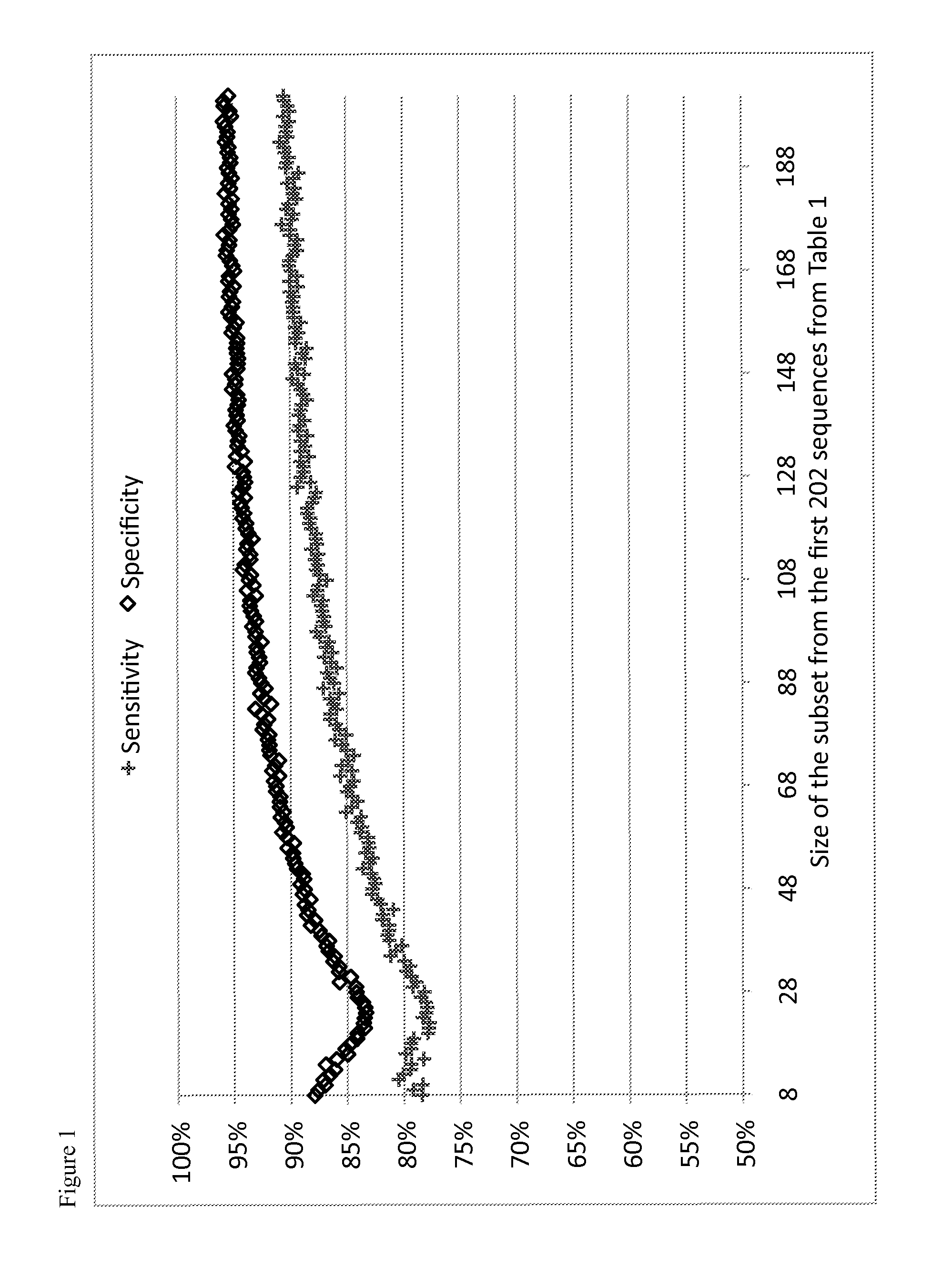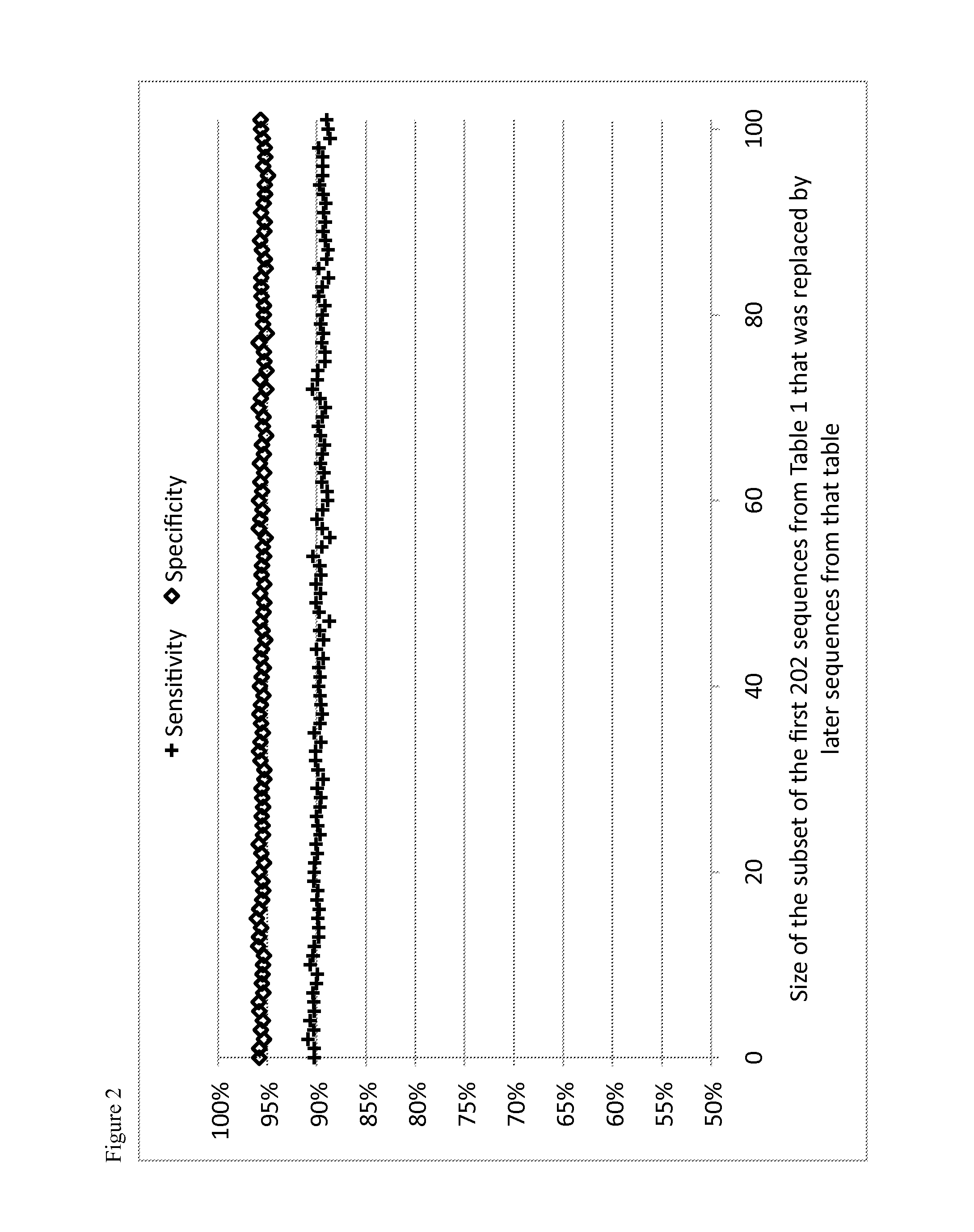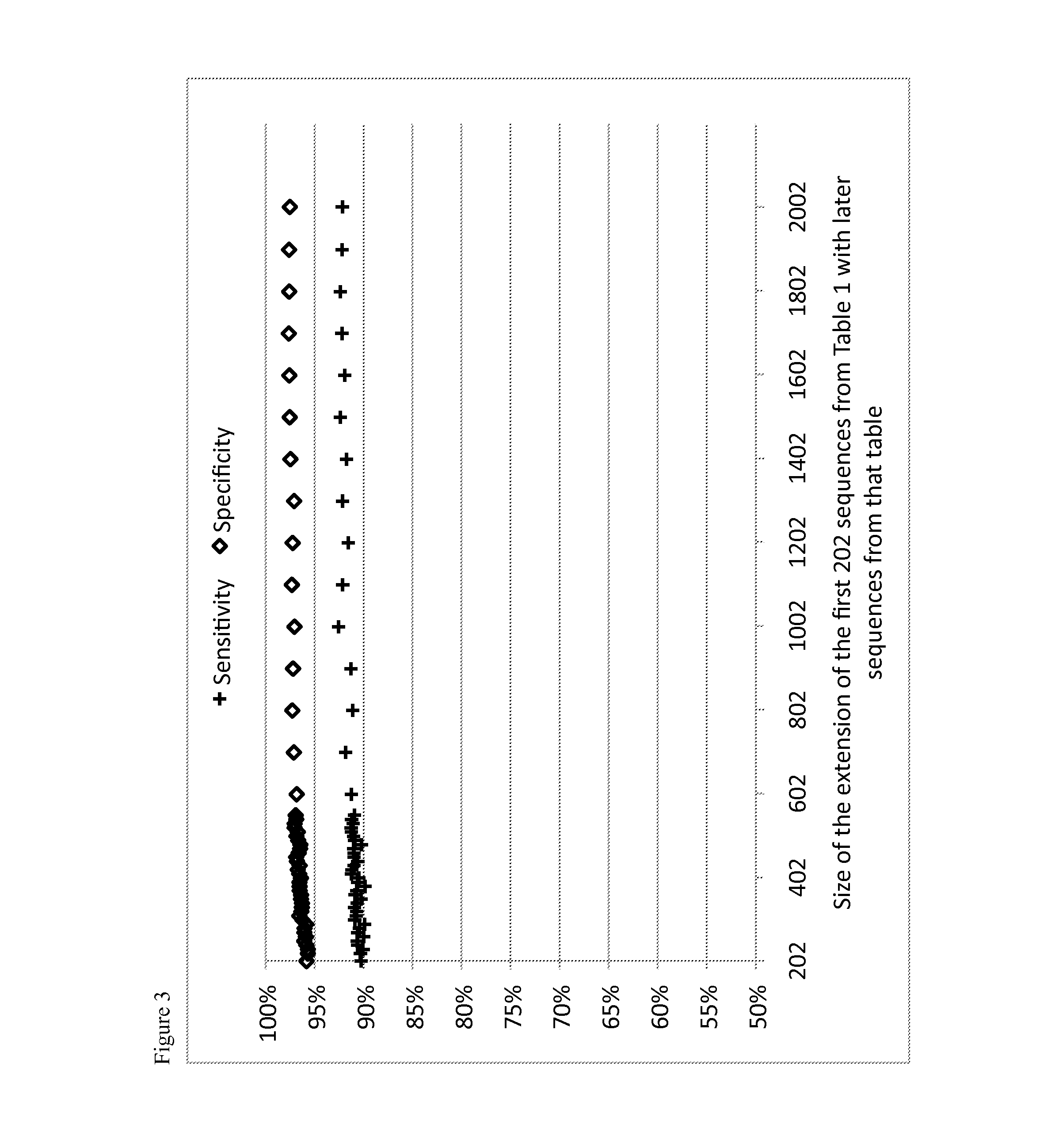Methods and kits for diagnosing colorectal cancer
- Summary
- Abstract
- Description
- Claims
- Application Information
AI Technical Summary
Benefits of technology
Problems solved by technology
Method used
Image
Examples
examples
Materials and Methods
[0154]Study Protocol
[0155]All results described herein are based on a prospective, clinical-diagnostic study protocol entitled Früherkennung kolorektaler Karzinome mit Hilfe von RNA-basierten Expression-Signaturen aus Blut-Eine multizentrische, diagnostische Studie zur Entwicklung and Validierung von Genexpressions-Signaturen zur Früherkennung kolorektaler Karzinome-Version CRC.SCR.2.BR.1 vom 06. January 2009” in accordance with the Guideline for Good Clinical Practice (Directive 75 / 318 / EEC) July 1996, version July 2002 (http: / / www.emea.eu.int / pdfs / human / ich / 013595en.pdf). This study protocol was reviewed and approved by the local ethics authority, the “Ethik-Kommission der Landesärztekammer Brandenburg” on Jan. 14, 2009. All persons entered into this study gave written informed consent that their blood samples and associated clinical data could be used for this research endeavor. Moreover, the persons gave written, informed consent that samples and clinical dat...
PUM
| Property | Measurement | Unit |
|---|---|---|
| Fraction | aaaaa | aaaaa |
| Fraction | aaaaa | aaaaa |
| Volume | aaaaa | aaaaa |
Abstract
Description
Claims
Application Information
 Login to View More
Login to View More - R&D
- Intellectual Property
- Life Sciences
- Materials
- Tech Scout
- Unparalleled Data Quality
- Higher Quality Content
- 60% Fewer Hallucinations
Browse by: Latest US Patents, China's latest patents, Technical Efficacy Thesaurus, Application Domain, Technology Topic, Popular Technical Reports.
© 2025 PatSnap. All rights reserved.Legal|Privacy policy|Modern Slavery Act Transparency Statement|Sitemap|About US| Contact US: help@patsnap.com



